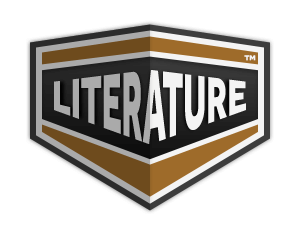The Child That Went with the Fairies
"The Child That Went with the Fairies" is a captivating short story by Joseph Thomas Sheridan Le Fanu, blending elements of folklore and supernatural fiction. The narrative follows a young boy who mysteriously disappears after encountering fairies in a nearby meadow. Through evocative prose, Le Fanu explores themes of innocence, wonder, and the perilous allure of the otherworld. The story delves into the tension between the mundane and the magical, ultimately raising questions about belief, imagination, and the boundary between reality and fantasy. As the boy's fate remains ambiguous, the tale evokes a haunting sense of mystery and the enchanting, yet dangerous, nature of the fairy world.
Eastward of the old city of Limerick, about ten Irish miles under the range of mountains known as the Slieveelim hills, famous as having afforded Sarsfield a shelter among their rocks and hollows, when he crossed them in his gallant descent upon the cannon and ammunition of King William, on its way to the beleaguering army, there runs a very old and narrow road. It connects the Limerick road to Tipperary with the old road from Limerick to Dublin, and runs by bog and pasture, hill and hollow, straw-thatched village, and roofless castle, not far from twenty miles. Skirting the healthy mountains of which I have spoken, at one part it becomes singularly lonely. For more than three Irish miles it traverses a deserted country. A wide, black bog, level as a lake, skirted with copse, spreads at the left, as you journey northward, and the long and irregular line of mountain rises at the right, clothed in heath, broken with lines of grey rock that resemble the bold and irregular outlines of fortifications, and riven with many a gully, expanding here and there into rocky and wooded glens, which open as they approach the road. A scanty pasturage, on which browsed a few scattered sheep or kine, skirts this solitary road for some miles, and under shelter of a hillock, and of two or three great ash-trees, stood, not many years ago, the little thatched cabin of a widow named Mary Ryan. Poor was this widow in a land of poverty. The thatch had acquired the grey tint and sunken outlines, that show how the alternations of rain and sun have told upon that perishable shelter. But whatever other dangers threatened, there was one well provided against by the care of other times. Round the cabin stood half a dozen mountain ashes, as the rowans, inimical to witches, are there called. On the worn planks of the door were nailed two horse-shoes, and over the lintel and spreading along the thatch, grew, luxuriant, patches of that ancient cure for many maladies, and prophylactic against the machinations of the evil one, the house-leek. Descending into the doorway, in the chiaroscuro of the interior, when your eye grew sufficiently accustomed to that dim light, you might discover, hanging at the head of the widow's wooden-roofed bed, her beads and a phial of holy water. Here certainly were defences and bulwarks against the intrusion of that unearthly and evil power, of whose vicinity this solitary family were constantly reminded by the outline of Lisnavoura, that lonely hillhaunt of the "Good people," as the fairies are called euphemistically, whose strangely dome-like summit rose not half a mile away, looking like an outwork of the long line of mountain that sweeps by it. It was at the fall of the leaf, and an autumnal sunset threw the lengthening shadow of haunted Lisnavoura, close in front of the solitary little cabin, over the undulating slopes and sides of Slieveelim. The birds were singing among the branches in the thinning leaves of the melancholy ash-trees that grew at the roadside in front of the door. The widow's three younger children were playing on the road, and their voices mingled with the evening song of the birds. Their elder sister, Nell, was "within in the house," as their phrase is, seeing after the boiling of the potatoes for supper. Their mother had gone down to the bog, to carry up a hamper of turf on her back. It is, or was at least, a charitable custom--and if not disused, long may it continue--for the wealthier people when cutting their turf and stacking it in the bog, to make a smaller stack for the behoof of the poor, who were welcome to take from it so long as it lasted, and thus the potato pot was kept boiling, and hearth warm that would have been cold enough but for that good-natured bounty, through wintry months. Moll Ryan trudged up the steep "bohereen" whose banks were overgrown with thorn and brambles, and stooping under her burden, re-entered her door, where her dark-haired daughter Nell met her with a welcome, and relieved her of her hamper. Moll Ryan looked round with a sigh of relief, and drying her forehead, uttered the Munster ejaculation: "Eiah, wisha! It's tired I am with it, God bless it. And where's the craythurs, Nell?" "Playin' out on the road, mother; didn't ye see them and you comin' up?" "No; there was no one before me on the road," she said, uneasily; "not a soul, Nell; and why didn't ye keep an eye on them?" "Well, they're in the haggard, playin' there, or round by the back o' the house. Will I call them in?" "Do so, good girl, in the name o' God. The hens is comin' home, see, and the sun was just down over Knockdoulah, an' I comin' up." So out ran tall, dark-haired Nell, and standing on the road, looked up and down it; but not a sign of her two little brothers, Con and Bill, or her little sister, Peg, could she see. She called them; but no answer came from the little haggard, fenced with straggling bushes. She listened, but the sound of their voices was missing. Over the stile, and behind the house she ran--but there all was silent and deserted. She looked down toward the bog, as far as she could see; but they did not appear. Again she listened--but in vain. At first she had felt angry, but now a different feeling overcame her, and she grew pale. With an undefined boding she looked toward the heathy boss of Lisnavoura, now darkening into the deepest purple against the flaming sky of sunset. Again she listened with a sinking heart, and heard nothing but the farewell twitter and whistle of the birds in the bushes around. How many stories had she listened to by the winter hearth, of children stolen by the fairies, at nightfall, in lonely places! With this fear she knew her mother was haunted. No one in the country round gathered her little flock about her so early as this frightened widow, and no door "in the seven parishes" was barred so early. Sufficiently fearful, as all young people in that part of the world are of such dreaded and subtle agents, Nell was even more than usually afraid of them, for her terrors were infected and redoubled by her mother's. She was looking towards Lisnavoura in a trance of fear, and crossed herself again and again, and whispered prayer after prayer. She was interrupted by her mother's voice on the road calling her loudly. She answered, and ran round to the front of the cabin, where she found her standing. "And where in the world's the craythurs--did ye see sight o' them anywhere?" cried Mrs. Ryan, as the girl came over the stile. "Arrah! mother, 'tis only what they're run down the road a bit. We'll see them this minute coming back. It's like goats they are, climbin' here and runnin' there; an' if I had them here, in my hand, maybe I wouldn't give them a hiding all round." "May the Lord forgive you, Nell! the childhers gone. They're took, and not a soul near us, and Father Tom three miles away! And what'll I do,
Translation
Translate and read this book in other languages:
Select another language:
- - Select -
- 简体中文 (Chinese - Simplified)
- 繁體中文 (Chinese - Traditional)
- Español (Spanish)
- Esperanto (Esperanto)
- 日本語 (Japanese)
- Português (Portuguese)
- Deutsch (German)
- العربية (Arabic)
- Français (French)
- Русский (Russian)
- ಕನ್ನಡ (Kannada)
- 한국어 (Korean)
- עברית (Hebrew)
- Gaeilge (Irish)
- Українська (Ukrainian)
- اردو (Urdu)
- Magyar (Hungarian)
- मानक हिन्दी (Hindi)
- Indonesia (Indonesian)
- Italiano (Italian)
- தமிழ் (Tamil)
- Türkçe (Turkish)
- తెలుగు (Telugu)
- ภาษาไทย (Thai)
- Tiếng Việt (Vietnamese)
- Čeština (Czech)
- Polski (Polish)
- Bahasa Indonesia (Indonesian)
- Românește (Romanian)
- Nederlands (Dutch)
- Ελληνικά (Greek)
- Latinum (Latin)
- Svenska (Swedish)
- Dansk (Danish)
- Suomi (Finnish)
- فارسی (Persian)
- ייִדיש (Yiddish)
- հայերեն (Armenian)
- Norsk (Norwegian)
- English (English)
Citation
Use the citation below to add this book to your bibliography:
Style:MLAChicagoAPA
"The Child That Went with the Fairies Books." Literature.com. STANDS4 LLC, 2025. Web. 22 Feb. 2025. <https://www.literature.com/book/the_child_that_went_with_the_fairies_4776>.








Discuss this The Child That Went with the Fairies book with the community:
Report Comment
We're doing our best to make sure our content is useful, accurate and safe.
If by any chance you spot an inappropriate comment while navigating through our website please use this form to let us know, and we'll take care of it shortly.
Attachment
You need to be logged in to favorite.
Log In